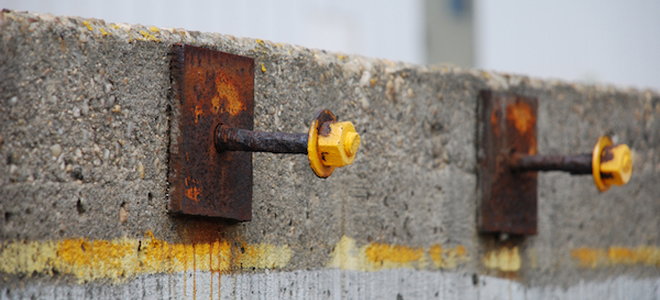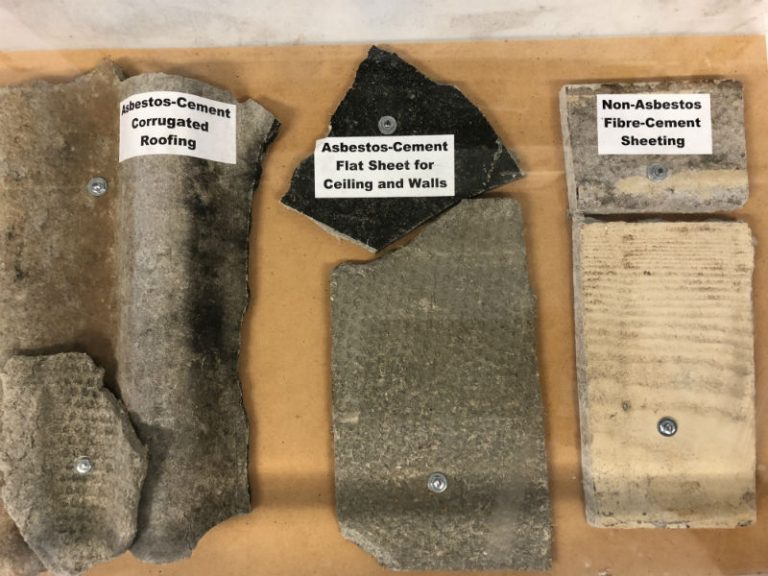What does asbestos siding look like?
What Is Asbestos Siding?
Asbestos, a natural mineral found in rocks and soil, consists of flexible fibers that are resistant to heat, chemicals, and electricity.
For these reasons manufacturers have widely used asbestos for years to make:
- Construction materials
Such as attic and wall insulation, vinyl floor tiles, shingles, siding, and blankets created to protect hot water pipes
- Textiles
Specifically heat-resistant fabrics
- Automotive parts
Like car brakes
A History of Asbestos Siding
Asbestos cement was first used on the exteriors of homes in the early 1900s when an Austrian engineer discovered how to form it into sheets, which allowed it to be manufactured as siding and shingles.
Soon it was recommended for use by the National Board of Fire Underwriters to replace wood as siding and roofing materials due to its outstanding fire-resistant properties.
This led to a boost in sales, and by the 1940s it had become extremely popular. Hundreds of thousands of homes in the United States were built using asbestos cement siding.
Not only was asbestos siding resistant to fire and heat, but it also:
- Resisted termite damage
- Stood up well to rot
- Was weatherproof
- Was extremely durable for many years
- Was easy to clean and maintain
- Was less porous than wood, making it easy to paint
Because of all these positive attributes, asbestos siding was then found pretty much everywhere.
But in the late 1960s and early 1970s, reports began to emerge that there were health hazards associated with asbestos.
The issue was that breathing in asbestos caused tiny fibres to get stuck in the lungs and irritate the tissues there.
 HOW TO IDENTIFY ASBESTOS SIDING
HOW TO IDENTIFY ASBESTOS SIDING
Owning an older home in the Delaware Valley raises the possibility that its siding may contain asbestos. Houses constructed prior to 1979 could have this hazardous material in the siding. Asbestos was commonly used as an insulating and fire-retarding additive in building materials. However, not every manufacturer used it, and building age alone does not automatically mean your home has asbestos. When you’re wondering how to identify asbestos siding, you begin by determining your home’s age. If the siding materials appear suspect, then you’ll ultimately need a laboratory test to confirm the presence of asbestos.
TOOLS NEEDEDHow to Identify Asbestos Siding
Examining your siding does not call for any specific tools. To inspect the building and collect a sample, you should use a:
- Dust mask
- Goggles
- Utility knife
- Resealable plastic bag
- HOW TO IDENTIFY ASBESTOS SIDING
- Determine the age of your home by looking at the property deed or any other records about its construction.
- Inspect your siding.
- Look specifically for any printed information that identifies the siding manufacturer or date of installation.
- Most siding created after the 1960s did not include asbestos.
- Count layers of paint because many layers indicate age and therefore a greater chance of asbestos.
- Examine areas around replaced windows and doors if they have newer siding next to them.
- Compare the newer siding to older siding areas and look for evidence that indicates age.
- Asbestos was particularly prevalent in siding that resembles shingles or was made to look like wood grain.
- If your siding has these characteristics, then asbestos could be present.
- You may choose to take a sample of siding from a damaged area of siding.
- Put on a mask and scrape away some siding material into a baggie.
- Contact an accredited testing lab in your area to analyse your sample.
What Does Asbestos Siding Look Like?
Asbestos was banned from the construction trades in the 1970s, so many people today need to know what asbestos siding looks like. It’s a fibrous substance with lots of thin particles. When these particles become airborne, they present an extreme health hazard when inhaled. This is why it is so very important when working around old structures that you can readily identify it. Here are some ideas about what to look for:
Roof Shingle Look
Asbestos siding usually looks a lot like roof shingles. It is very brittle and has a black tar-paper-like backing. The front appears with a grainy sandy-like texture. Unfortunately, asbestos siding was originally designed to mimic many different types of materials.
Wood Grain Texture
Old asbestos siding tiles may also have a wood-grain texture like cedar. Most likely the shingles are in two sizes – 12 inch or 24 inch. The bottom of an asbestos siding tile may have a wave-like pattern, though not always. This is the most common pattern used.
Testing for Positive ID
The best method for determining if a substance contains asbestos is to send a sample to a lab for testing. There was some concern in the latter part of the last century that asbestos was a harmful substance, so manufacturers began to “disguise” its presence in many products, making visual identification nearly impossible.
Check with your local municipal building code inspectors for help determining if your examined structure contains asbestos.
Type of Asbestos Siding
- Stucco (Real and Synthetic)
- Natural Wood Siding
- Synthetic Wood Siding
- Vinyl Siding
- Asbestos Siding
How to Identify Asbestos Siding
– Determine the age of your home by looking at the property deed or any other records about its construction.
– Inspect your siding: Look specifically for any printed information that identifies the siding manufacturer or date of installation.
– Count layers of paint because many layers indicate age and therefore a greater chance of asbestos.
– Examine areas around replaced windows and doors if they have newer siding next to them.
-Compare the newer siding to older siding areas and look for evidence that indicates age.
– Asbestos was particularly prevalent in siding that resembles shingles or was made to look like wood grain.
– If your siding has these characteristics, then asbestos could be present.
– You may choose to take a sample of siding from a damaged area of siding.
– Put on a mask and scrape away some siding material into a baggie.
– Contact an accredited testing lab in your area to analyze your sample
With each type of siding, there is potential for the presence of asbestos.The strong fibers were combined with substances such as cement and molded together to make asbestos siding. Like other forms of asbestos used, the siding was done away with during the late 1970s, early 1980s. Because the material is so toxic, the only way to determine that you have asbestos siding is to have it tested. Some of the characteristics that are unique to asbestos siding include shingle/shake form 12″x24″, with a few nails contained at the bottom portion of each panel.
There are many types of sidings and they each have their own risks for asbestos exposure. In any event, asbestos siding is harmless unless disturbed. If you are unsure if your home contains the substance, choose the safe route and call an asbestos removal professional for an assessment.
Reference-
Thank you for reading this information about asbestos, we have written an article on the best 30 “Asbestos Removal Melbourne” Companies. Please take a read.
https://www.asbestossafety.gov.au/







